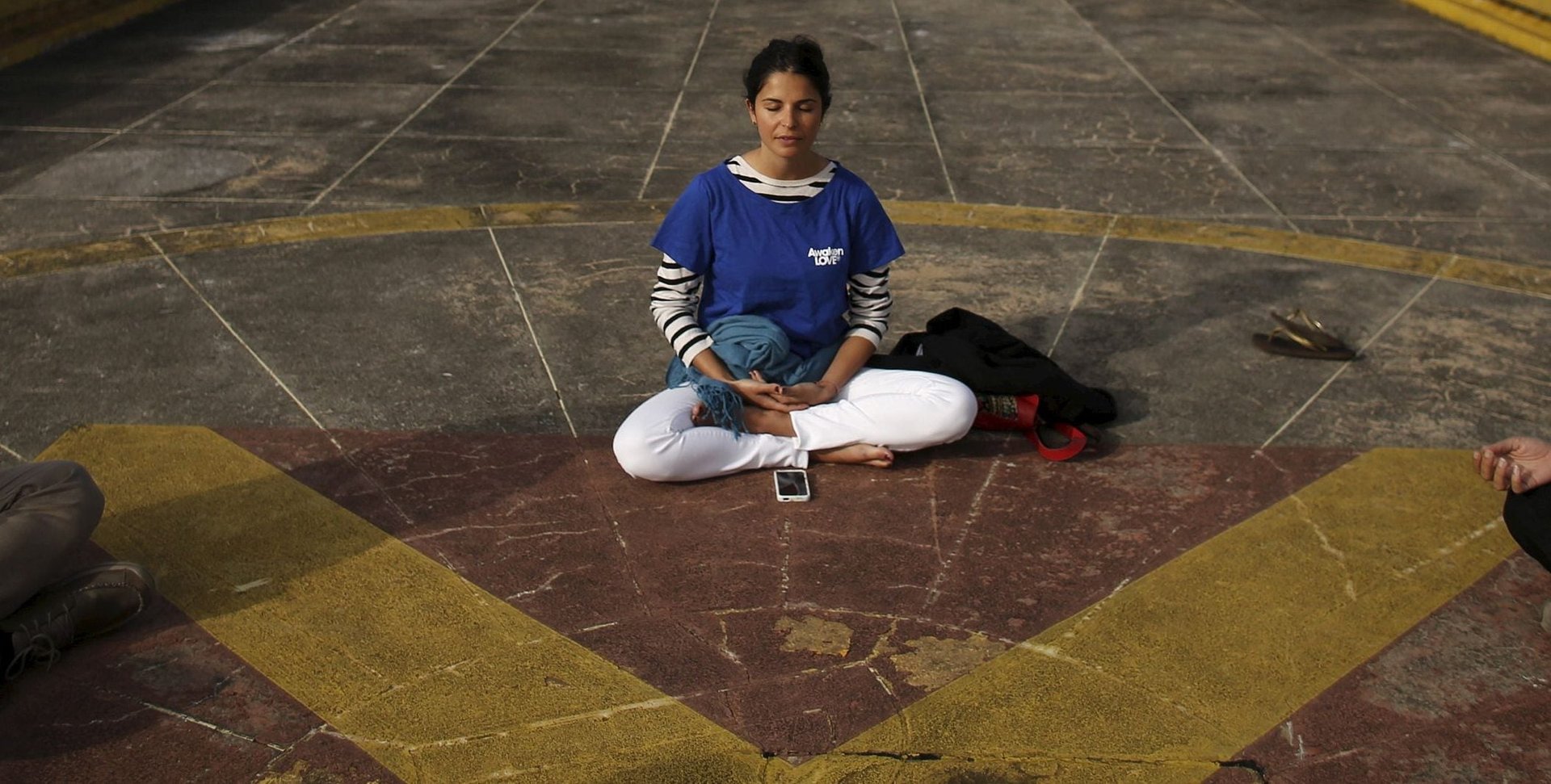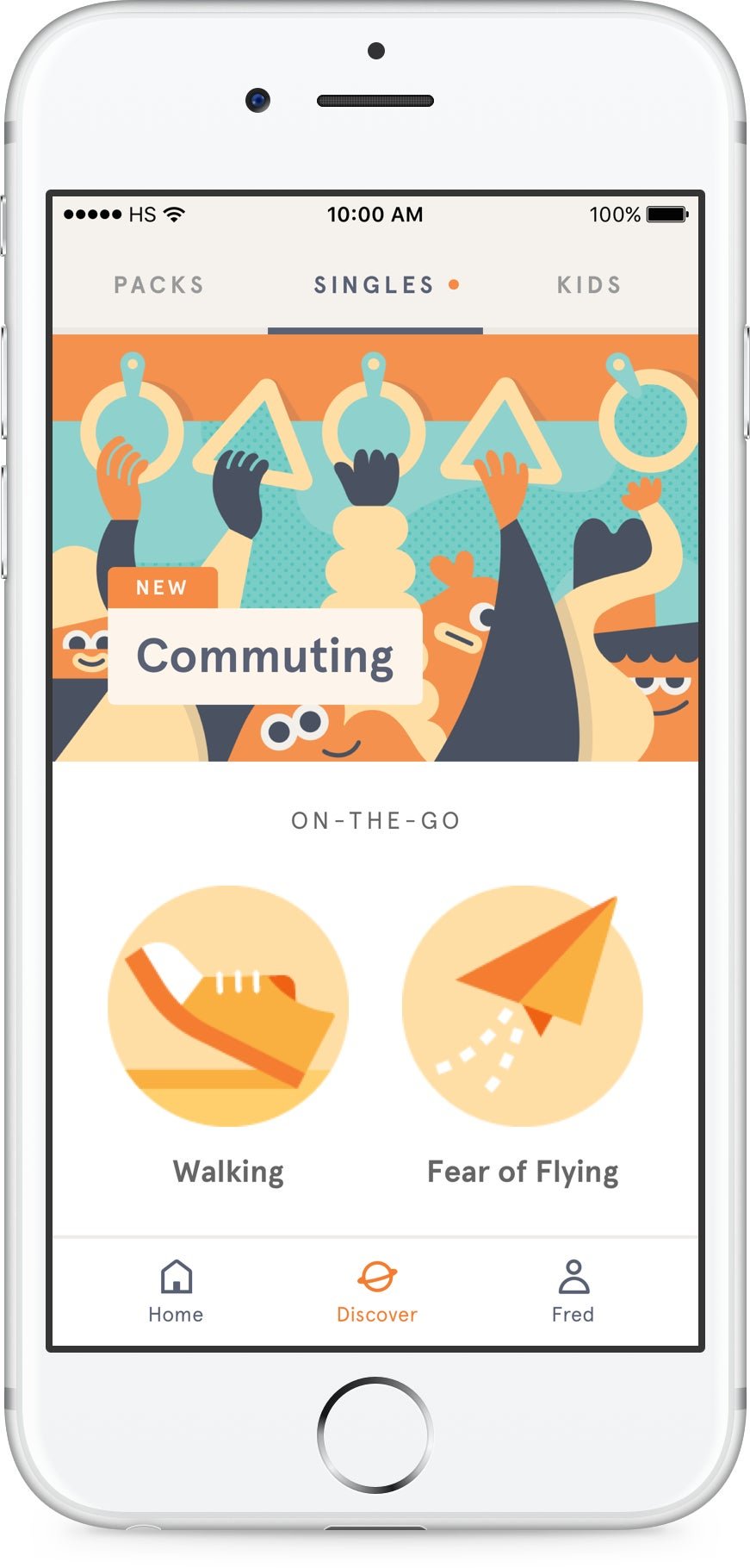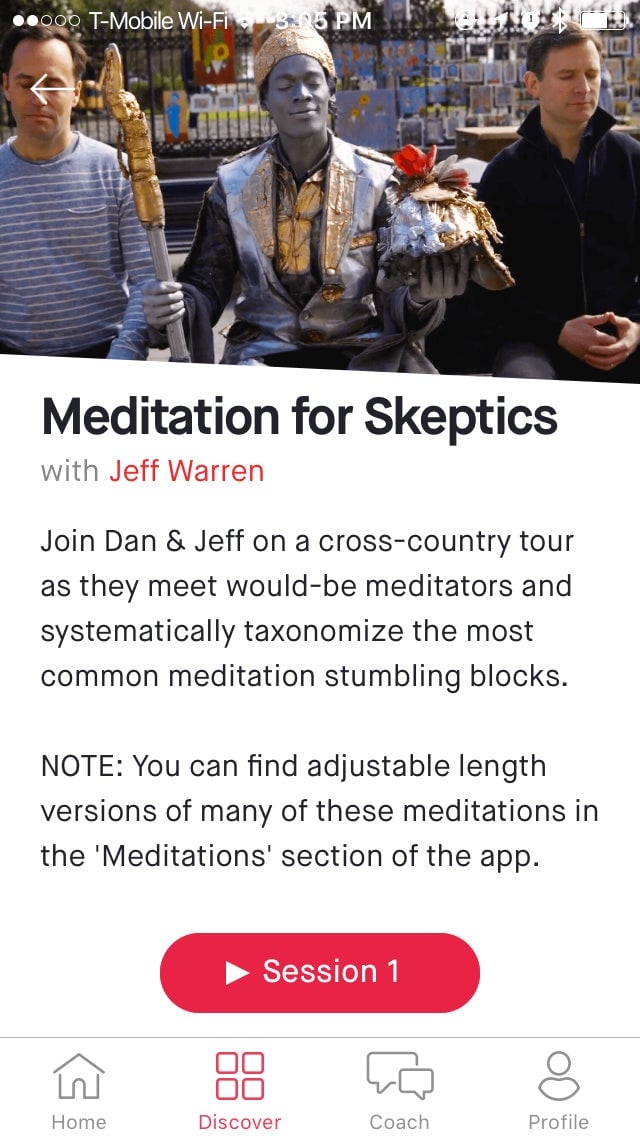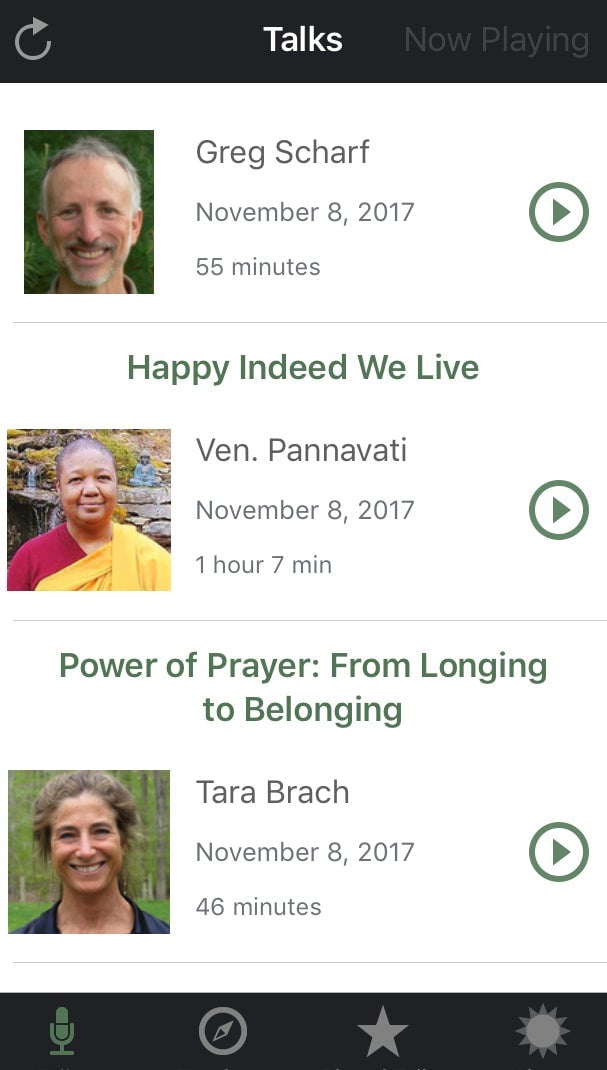Two apps to help you start meditating, and one for when you’re ready to go deeper
Our phones, with all their dings, distractions, and addictiveness, may also be our best bet for bringing some mindfulness back into our lives.


Our phones, with all their dings, distractions, and addictiveness, may also be our best bet for bringing some mindfulness back into our lives.
New York Times columnist David Gelles, author of Mindful Work: How Meditation Is Changing Business From the Inside Out, learned to meditate in India 10 years ago. But last week during a talk on meditation in businesses at the Asia Society in New York, he touched upon this irony, naming three apps in particular for teaching oneself meditation:
Headspace
If you’ve heard of any meditation app, or had one recommended to you, it’s most likely Headspace. It was co-created by a meditation teacher who had studied as a Buddhist monk and former ad man, and it’s been downloaded more than 20 million times. Gelles called it “a seamless, fun introduction that can really help you form a daily meditation habit.”
Dead easy to use, with charming illustrations and a clean interface, the app first leads you to choose a morning time slot when you have a solid shot at adding a three- or five-minute voice-guided meditation to your established routine (When you first wake up? After brushing your teeth? After breakfast?)
You can sign up for a free trial, but with a monthly subscription ($7.99, on an annual contract or $12.99, without one) you’ll have access to hundreds of sessions on various themes, including “SOS” and sleep, or commuting exercises.

10% Happier
This “gem” according to Gelles, is perfect “if you want to go a bit deeper.” It was made by ABC news anchor Dan Harris, who had an on-air panic attack in 2004, later found mediation, and wrote a 2014 book about its science.
With 10% Happier, “You get video and audio of Joseph Goldstein, who is one of this culture’s most talented and celebrated teachers over 50 years in the United States,” Gelles explained. (Goldstein co-founded Insight Meditation Society in Barre, Massachusetts and has been leading retreats since the mid-1970s.) You’re also given access to original video and audio from other leaders in the field, all in interview format.
The vibe here is more collegiate than Headspace, and there’s a heavy emphasis on meditation as a secular and scientific practice. “No robes. No crystals,” the website promises. Basic intro videos are free, but it’s $14.99 per month to continue, or $8.33 per month if you sign up for a one-year membership.

Dharma Seed
The final Gelles pick, he said, is for meditators who already feel their chakras and want to “go even deeper.” It is as granola as an app can be, with plenty of robes visible in the headshots of dozens of Buddhist teachers whose lectures are catalogued on the site, and it’s free of bells and whistles. “A vast, endless library of, really, just talks about meditation and mindfulness,” is how Gelles describes it.
Many, he added, are the formal Buddhist talks, or “Dharma” talks, you’d hear at a retreat center. Goldstein is here, as are teachers like Sharon Salzberg and Tara Brach. They cover topics such as dealing with fear, or seeing “basic goodness,” and learning loving kindness meditation. “For anyone who is interested in this, it is the source material,” Gelles promises.
Dharma Seed is free, but it’s only available for iOS devices for now. The creators, from Insight Meditation, say they hope to create an Android version in the future.
